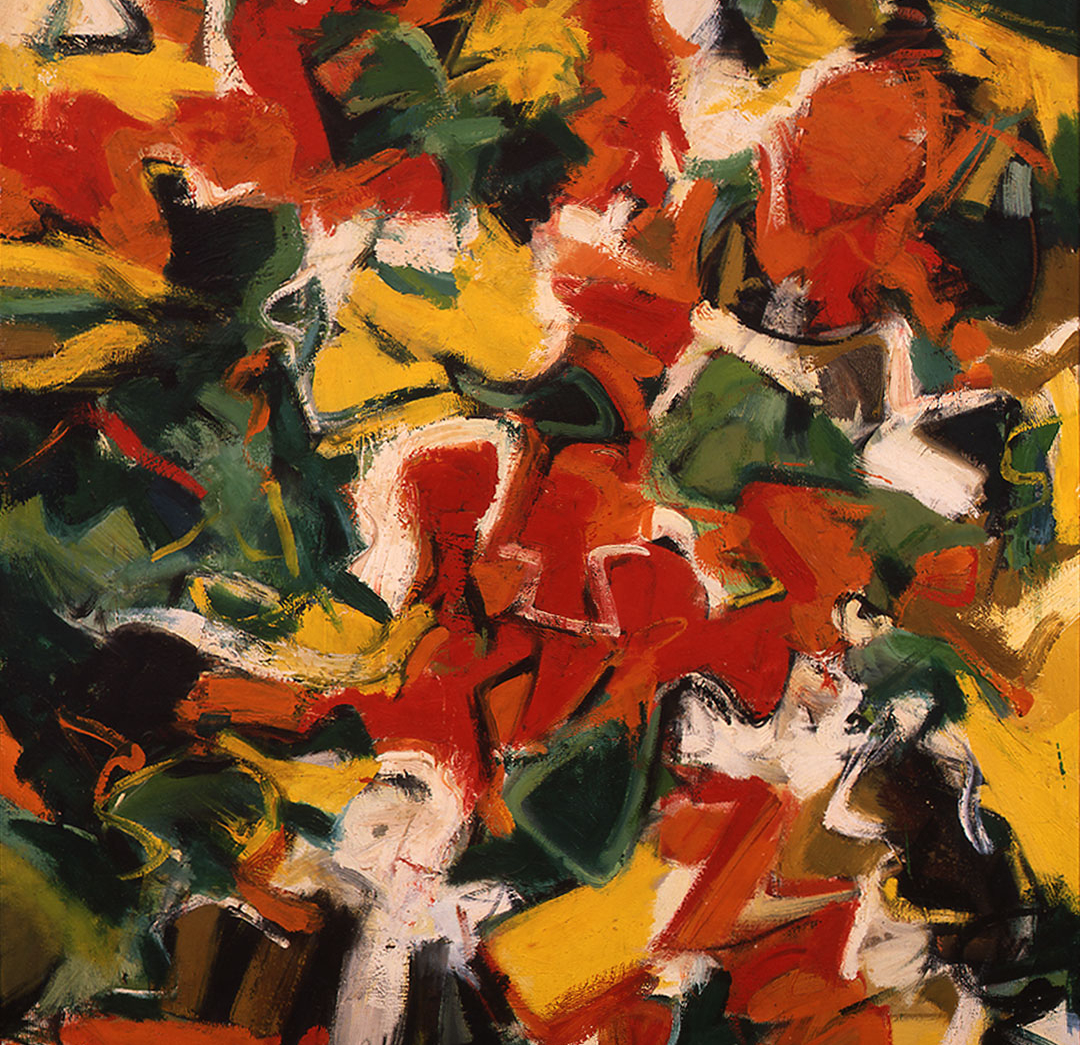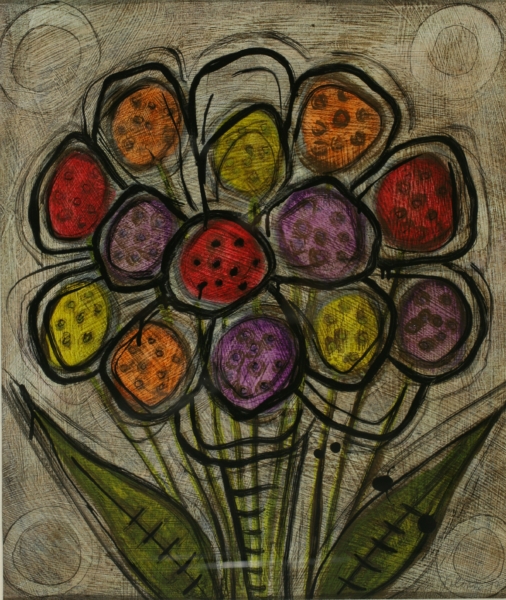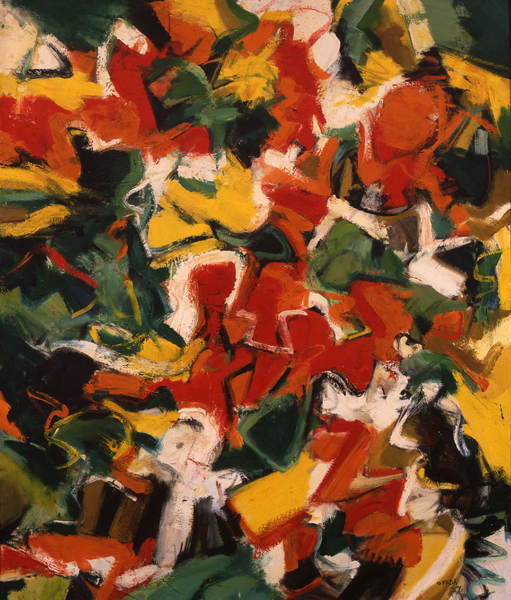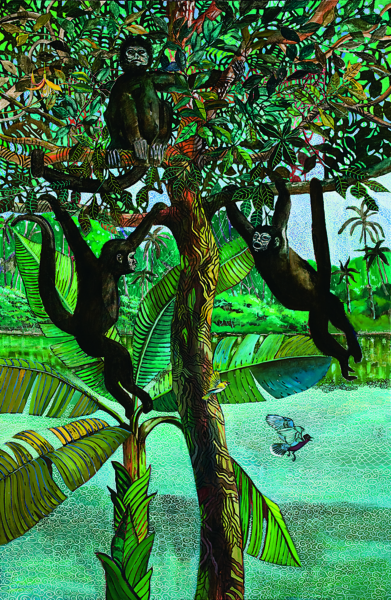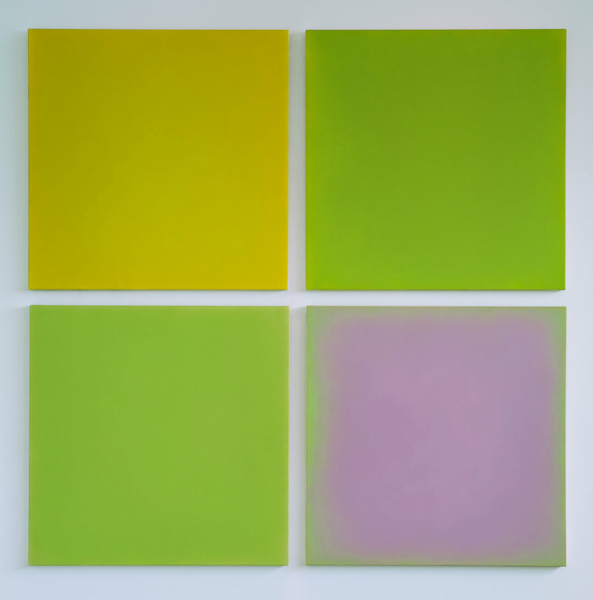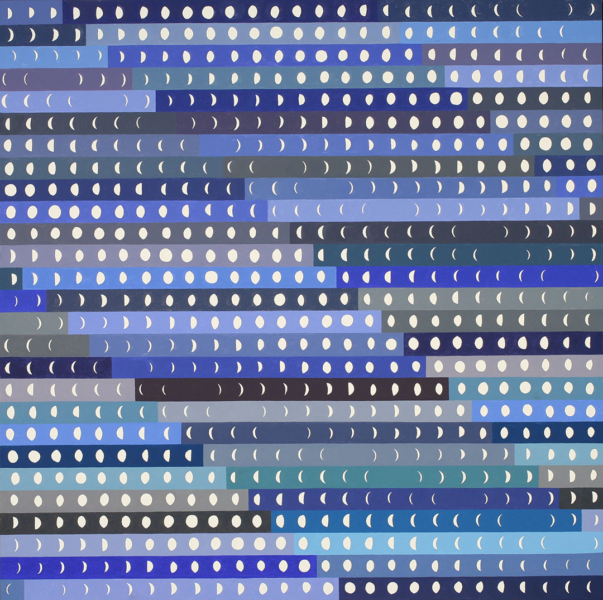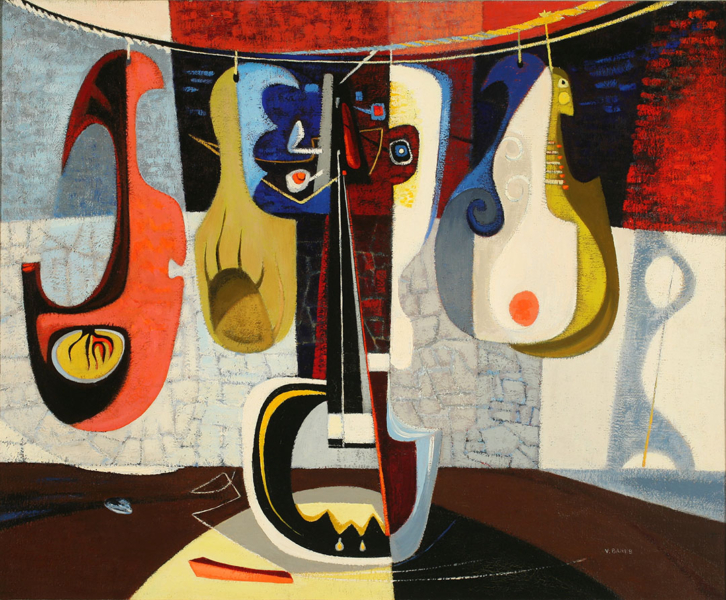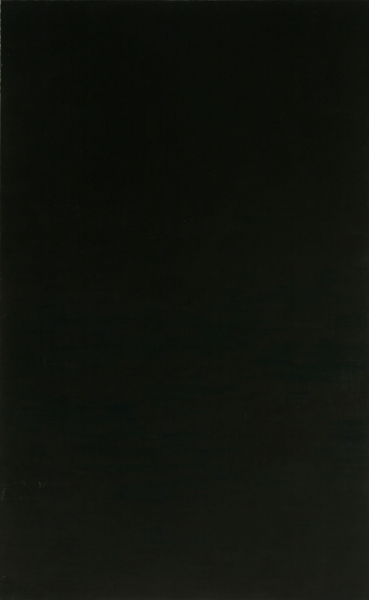The range of colors an artist uses in a work (known as the palette) can evoke emotions, suggest a mood, or disorient, and is a key component to consider when studying a painting.
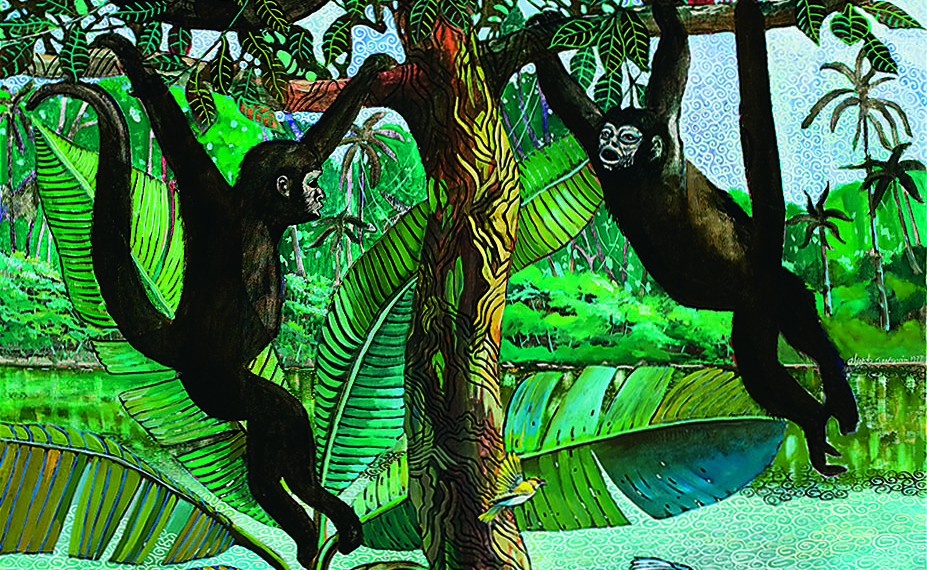
“I appreciate the difference in colors on people, animals, and flowers…. I love all colors and every one of my paintings has something I like.
I love nature and patterns, and I combine the two together. I’m a very free painter because I didn’t adhere to the teachings of ‘You have to have a style.'”
—Alfredo Arreguín
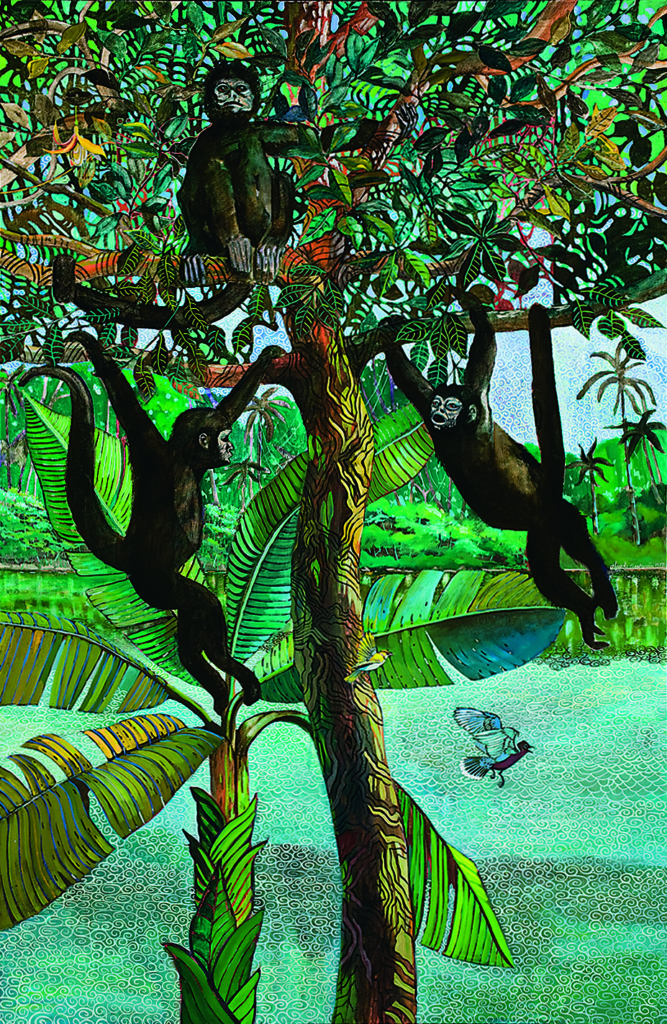
If a painter wants their work to recreate the world as it is, matching their colors to that environment will be an important part of that illusion.
But changing color away from the expected, heightening, reducing, or even removing it are all strategies artists use to enhance the effect they want to achieve.
Color is the key element in this painting. Virginia Banks was a modernist and experimented with ways of manipulating color and space. She was particularly interested in surrealism.
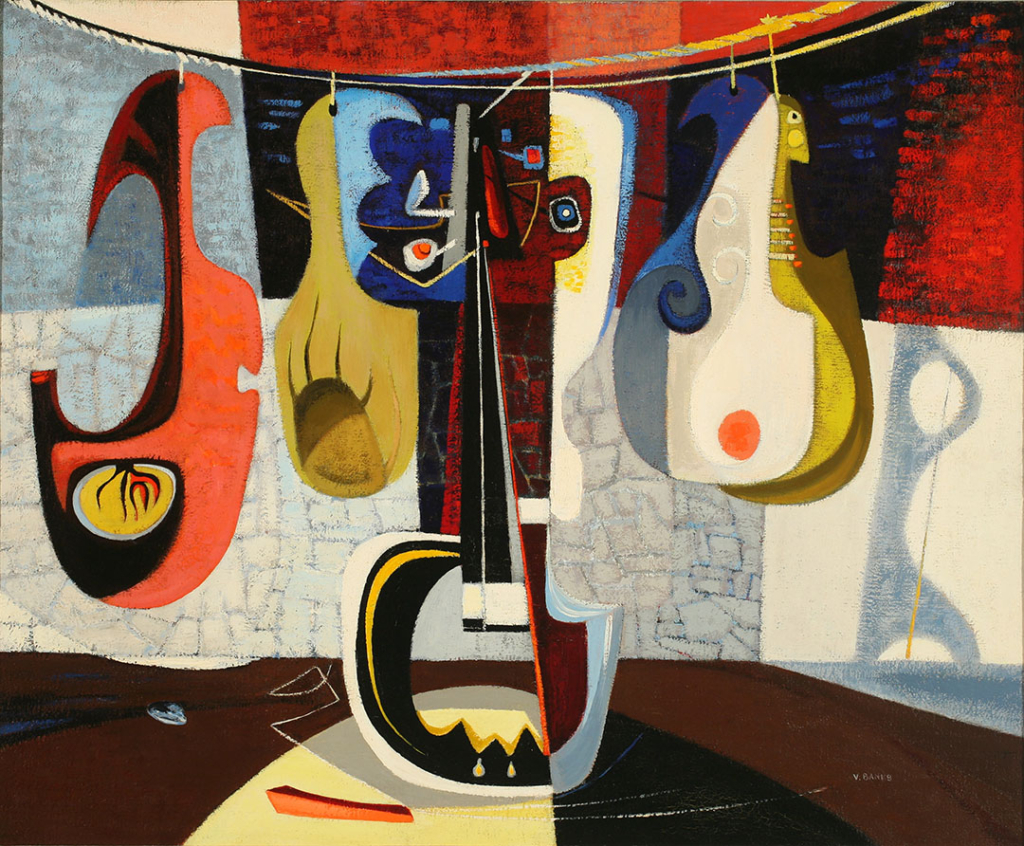
Her colors disorient us. Though abstracted we can still tell those are guitars and other stringed instruments. It’s 1949 so they should be brown wood not orange, blue, yellow, and white. The colors of the background also appear in spots on the instruments so they merge in places. Are we indoors or outdoors? Looking into a room or at a flat wall? This jangle of colors and shapes almost create sounds. In my head it’s a jazz ensemble.
“In various ways, I have been making paintings that use light and color for the past two decades. Color cannot be perceived without light.
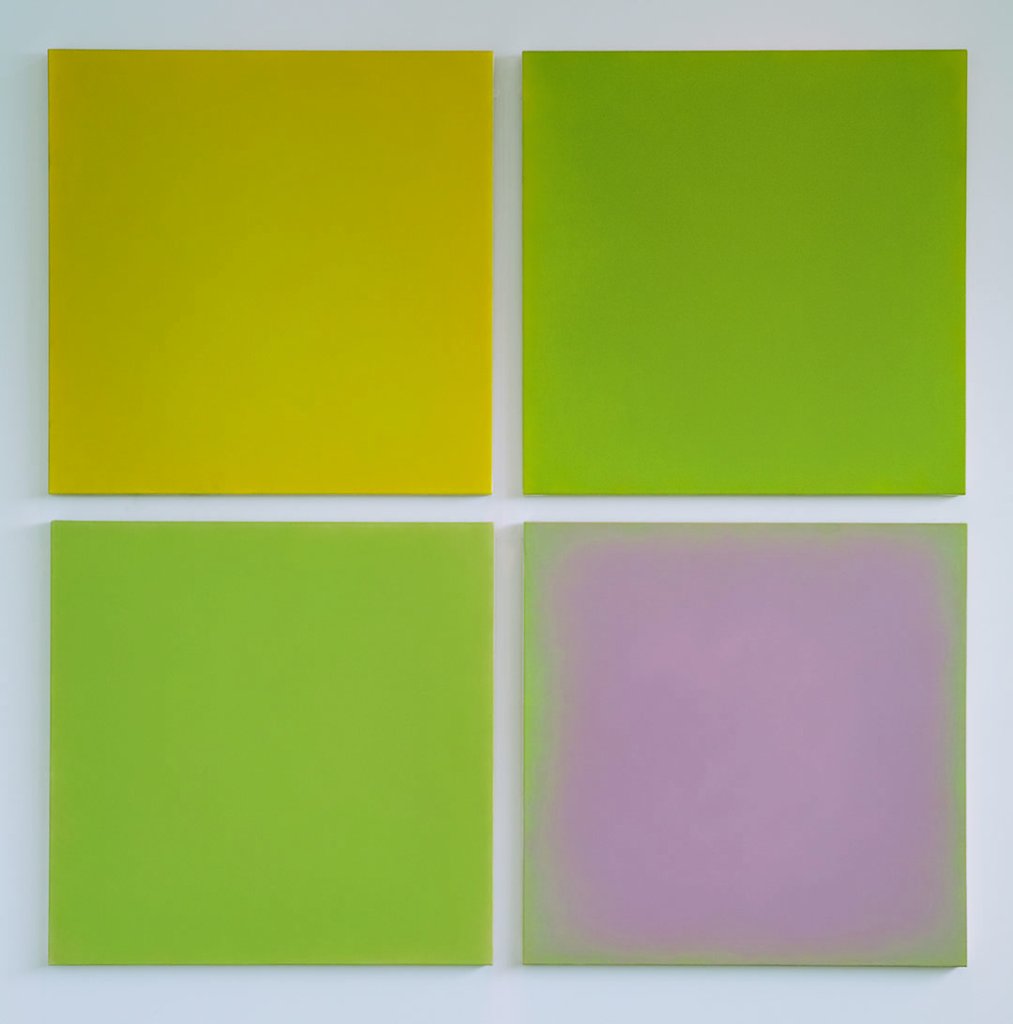
My interest as a painter is in the fragile and ever changing phenomena of the temporal world in which we live…. Plants reflect this in their annual cycles through the seasons that come about through exposure to light. I paint plant cycles because they reflect most other life cycles….. Day always gives way to night, and the night cannot contain the color of the flower that will fade and then become a seed. Conversely, the seed cannot flourish without the light. These are the experiences that engage me as a painter.”
—Anne Appleby
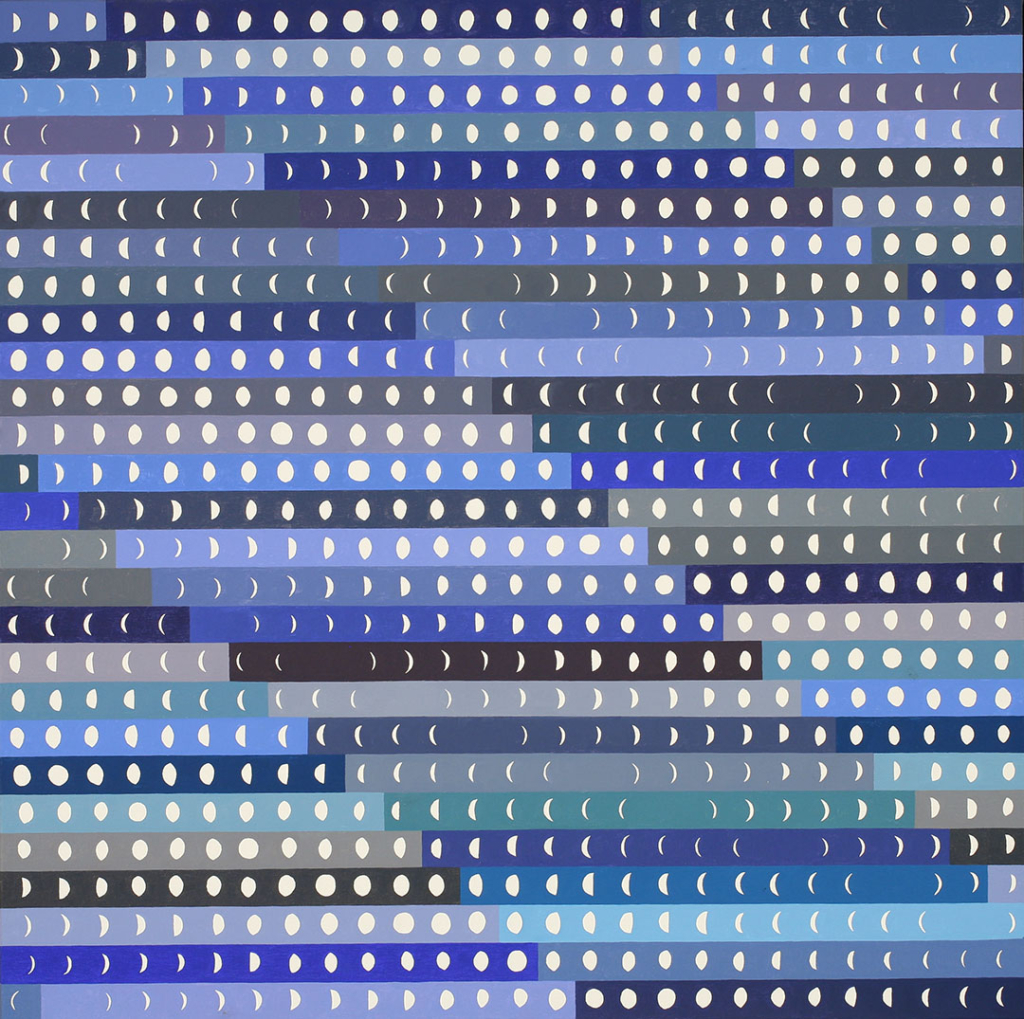
This painting is part of a series by Lisa Liedgren in which she recorded the timeline of selected events through the use of changing bars of color and the phases of the moon. In this work she references the writing of a 1949 book by French author Simone de Beauvoir which discusses the treatment of women throughout history.
There is, however, no key for this work. We are left to wonder what the colors symbolize individually and as they recur in different sequences. It’s like trying to break a secret code. Though I’ve tried to connect the colors to my own experiences of writing, I have yet to figure it out.
Tacoma Art Museum is located on the homelands of the Puyallup Tribe of Indians. We recognize and honor the Puyallup people and Coast Salish communities who have endured so much, so that we can all thrive here today.
Painting Deconstructed: Selections from the Northwest Collection was organized by Tacoma Art Museum and generously supported in part by Tacoma Creates.
Exhibition texts by Margaret Bullock, Chief Curator, Curator of Collections and Special Exhibitions unless otherwise noted.
Copyright for the artwork and the photography of the artwork lies with the artist, their assigns, or the museum. Images are available to view here for educational purposes only and are not for commercial use.
Image credit: Frank Okada. “Milltown,” 1958. Oil on canvas mounted to board, 46 7/8 x 40 in. (119.1 x 101.6 cm). Tacoma Art Museum. Gift of Barbara and John Erling.
